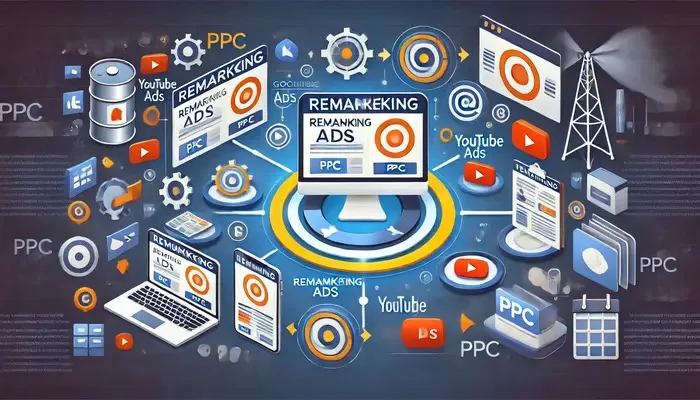
Remarketing in PPC: Ways of Returning Customers
In the dynamic world of Pay-Per-Click (PPC) advertising, retaining customers is as crucial as acquiring new ones. Remarketing is a powerful tool that allows businesses to re-engage users who have previously interacted with their websites or apps. By delivering tailored ads to these potential customers, remarketing helps keep your brand top-of-mind, ultimately increasing the likelihood of conversion.
Types of Remarketing in PPC
Remarketing in PPC can be broadly categorized into a few key types:
- Standard Remarketing targets past visitors as they browse other websites and apps, keeping your brand visible.
- Dynamic Remarketing focuses on displaying ads featuring products or services that users have already viewed on your site, which is particularly effective for e-commerce businesses.
- Video Remarketing allows you to reach users who have engaged with your YouTube videos or channel, extending your brand’s reach across platforms.
Each type of remarketing serves a unique purpose in re-engaging your audience, whether by reinforcing brand awareness or encouraging a return to complete a purchase.
How to Set Up Remarketing in Google Ads and Other Platforms
Setting up a remarketing campaign involves a few essential steps:
- Create a Remarketing List: Define your audience based on specific criteria such as site visits or past conversions. This list can be created in platforms like Google Ads, where you can also segment your audience.
- Add a Remarketing Tag: Install a remarketing tag on your website to track visitor behavior and add them to your remarketing list
- Launch and Monitor Campaigns: Design ad creatives tailored to your remarketing audience, set appropriate bids, and monitor the campaign performance closely to make necessary adjustments.
Strategies for Returning Customers with Remarketing
To maximize the effectiveness of your remarketing efforts, it’s important to employ targeted strategies that address the specific needs of returning customers. Personalized offers are particularly effective. For instance, an online casino like 21Point could use remarketing to encourage previous visitors to return by highlighting exclusive promotions through the anchor text 21 Point casino login. Another approach is to use time-sensitive campaigns that create a sense of urgency, prompting users to act quickly.

Measuring the Effectiveness of Remarketing Campaigns
Tracking the success of your remarketing campaigns is crucial to ensure you’re achieving the desired outcomes. Key performance indicators (KPIs) such as conversion rate, cost per conversion, and Return on Ad Spend (ROAS) will help you assess whether your remarketing efforts are driving meaningful results. Monitoring these metrics will also provide insights into areas where your strategy might need adjustment.
Remarketing Mistakes and Problems: How to Avoid Them
Remarketing, while powerful, can lead to issues if not handled correctly. Overexposure is a common problem, where users are bombarded with too many ads, leading to ad fatigue. To avoid this, set frequency caps on how often your ads are shown to the same user. Additionally, irrelevant ads can turn potential customers away, so ensure that your ads are closely aligned with the user’s previous interactions.
Examples of Successful Remarketing
Many companies have successfully utilized remarketing to boost their conversion rates. For instance, a major online retailer used dynamic remarketing to target users who had abandoned their shopping carts. By showing personalized ads featuring the exact products users had left behind, they managed to recover a significant percentage of abandoned carts, leading to increased sales.
In conclusion, remarketing in PPC is an invaluable strategy for businesses looking to re-engage past visitors and drive conversions. By understanding the different types of remarketing, setting up campaigns correctly, and avoiding common pitfalls, you can effectively bring customers back to your site, leading to increased sales and long-term loyalty.
